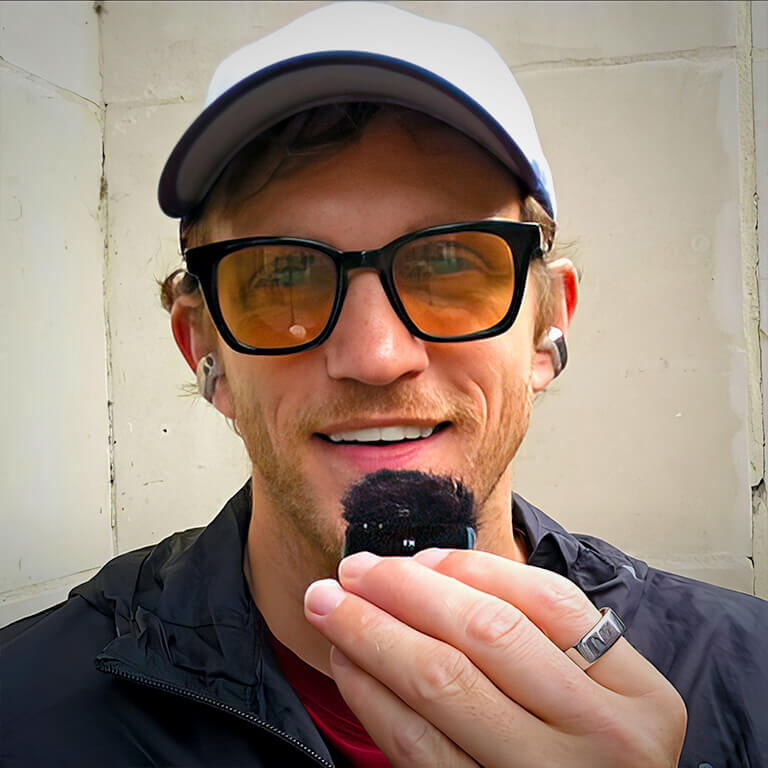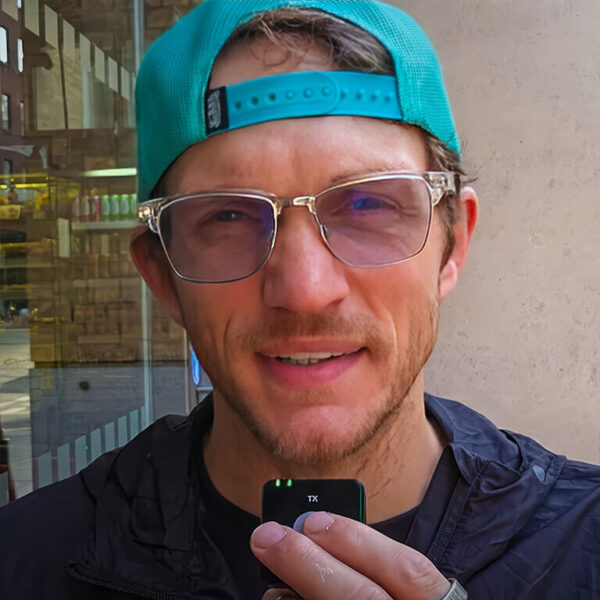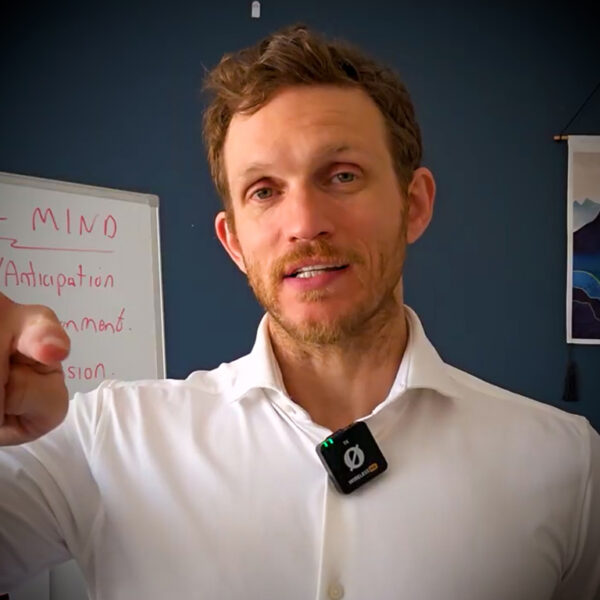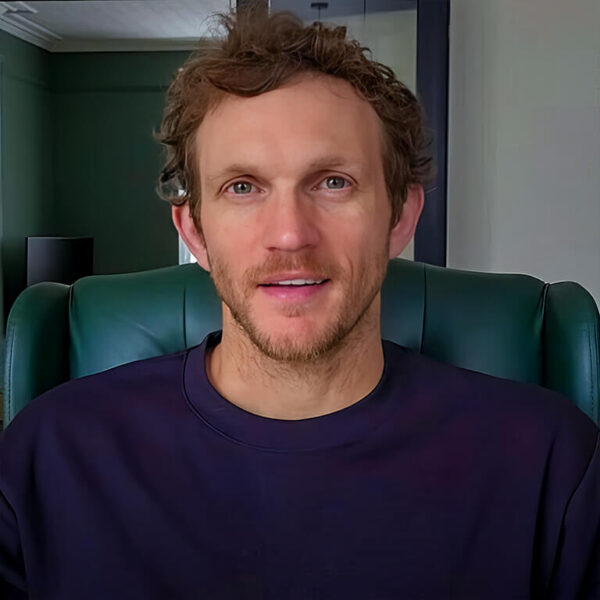
How to Manage Anxiety in Everyday Life
In today’s blog, I’m going to talk to you about anxiety. More specifically, I’m going to take you through the processes that I use in my own personal life to manage anxiety.
Now, if I wanted to be really precise with this, I’d say this: often, we feel anxious because we have nowhere to be or nothing to do for a set period of time. You feel anxious because you’ve got three hours before you can go to bed. You feel anxious because there’s an hour before you’re meeting people.
Very rarely do you feel everyday anxiety while you’re actually in the middle of doing something.
And this is the first clue. That’s what I wanted to talk about today.
Interrupting the Pattern of Anxiety
In my own life, when I’m feeling anxious, I tend to interrupt the pattern by taking action.
It can be something as small as putting my favorite song on and listening to some music. It could be doing ten press-ups. Anything that can interrupt that spiraling feeling like, “I’m anxious and it’s going to last forever.”
Just because I’m a coach and just because I teach people how to manage anxiety, it doesn’t mean I don’t suffer from it myself.
Earlier today, I came up to London because I’m hosting a training course tomorrow and Sunday. I’ve got a client flying in from Portugal who’s taking my course on how to approach women in the real world.
I came up earlier in the day and didn’t really have any plans. I thought I’d just chill and grab some food. And then, all of a sudden, I began to feel a bit anxious.
So rather than just sitting around waiting for the anxiety to get worse, I put some headphones on. I put on a cool song. I started to move. I just went for a walk, and then I started to feel great.
Then I thought, why don’t I make plans for tonight?
Action as a Cure for Anxiety
I walked along South Bank, where I’m staying, and I ended up at Shakespeare’s Globe. There’s a play on tonight, and I’ve just booked a ticket. Now I have a destination at 7:30 this evening.
And all of a sudden, because I took action to intervene in my emotions, I feel better.
So, there are a few important things I want to highlight from this:
Step one is to realize that you often feel anxious because you don’t have anywhere to be or because you’re waiting for something to happen. Whether that’s going to bed, meeting someone, or the next day’s work. But to break that state, all you need to do is something right now.
It doesn’t really matter what it is. It just needs to break your state.
If it’s music you love, even better. If it involves moving your body, even better.
Managing Anxiety vs Avoiding It
Now, going back to what I was saying about how to manage anxiety, I think there are many layers to it.
There’s anxiety in the moment — that day-to-day sense of nervousness or unease when you’ve got nowhere to go or you’re not quite sure what to do.
Interrupting that pattern is one of the best ways to deal with it. You’re dealing with it head-on. You’ve got an issue, and you’re disrupting it through motion or music or action.
Then there are other kinds of anxiety, often tied to trauma. These are a little more difficult to deal with.
Trauma means that sometime in your past, something happened that triggered a powerful emotional response. That emotional response got trapped in your nervous system. And unless you revisit it through therapy, writing, or creative outlets, that trapped feeling stays within you — often for life.
Personal Example: Physical Trauma and Emotional Anxiety
In my own personal life, I mentioned the eye condition I have. I’ve realized this condition stems from an eye trauma I experienced about eight years ago.
My photosensitivity started from that moment. I had an eye operation where they had to shine bright light into each eye for 30 minutes. Now, looking back, that experience created a hardwired neurological response in me.
Now, when light enters my eyes, I react as if it’s ultraviolet light. That’s a stimulus-response mechanism. Light enters. I get headaches and migraines.
But during a therapy session (using EMDR), I identified that memory. And now that I’m aware of it, I’ve started to visualize myself looking at bright lights and being unaffected. That awareness alone has already helped.
Until recently, I didn’t really understand that trauma could be trapped in different parts of your body. But it can. And in my case, it’s been trapped in my eyes.
So for now, I’m managing the issue with specific glasses. But moving forward, I’m also addressing the root cause of the anxiety.
Short-Term Management and Long-Term Healing
And that’s the best advice I can offer if you’re trying to learn how to manage anxiety in your own life.
Step one: Do something now to cope with the immediate situation. Distract yourself. Move your body. Put on a song. Break the cycle.
Step two: Explore the deeper roots of your anxiety. That could mean speaking to a therapist or journaling to uncover emotional triggers.
Explore Your Emotional Triggers
When you combine immediate coping with deeper exploration, you give yourself the chance to cope today while also healing long term.
Now, I’m not saying there’s a guarantee that therapy will help my eyes. But I’m open to exploring it as a possible solution. And I think that’s a powerful mindset to have.
It’s easy for me to say, “Oh, I’ll just wear these glasses and be fine.” But the truth is, I don’t want to wear photosensitive glasses for the rest of my life. I want to get back to a place where I only wear sunglasses when it’s actually bright outside.
So, I’ve got a goal. I’ve got a route to get there. And I’ve got a coping mechanism to support me along the way.
Hopefully, this gives you some insight into how I personally deal with anxiety and stress in my life.
Physical Symptoms and the Anxiety They Create
Let me share something else personal with you.
I’ve been dealing with an issue in my hips and lower abdomen. It’s painful and complicated because I’m currently in rehab for it. To be specific, it can cause intense nerve pain — especially when going to the toilet.
Now, I believe that this pain is related to the rehab work I’m doing. But of course, there’s a part of me that feels anxious that maybe it’s not just rehab-related.
So, earlier today, I reached out to a friend of mine who’s a doctor and a former client. He told me to go and get two specific tests done. He said it’s probably nothing serious, but just to be sure, I should go anyway.
And again, this is a clear example of how I handle anxiety in my life.
I’m working on the long-term solution — doing the rehab and staying consistent. But I’m also addressing the short-term anxiety by getting the tests done.
Even if the results come back clean, I’ll feel calmer knowing that nothing serious is going on. That’s what matters.
Why Taking Action Reduces Anxiety
If you’re reading this and going through a difficult period yourself, I’d encourage you to take the same approach.
If you think you need to see a doctor or a therapist, just go and do it. The simple act of doing something — of moving forward — will reduce your anxiety.
Even if nothing changes right away, you’ll be able to relax knowing you’re on the right path.
So often, anxiety builds because we feel like we’re stuck or powerless. But when you take action, you regain control. Even small steps can create a powerful shift in your emotional state.
Sharing Honestly in Real-Time
You might have noticed from my recent content that I’ve been focusing on being raw, open, and unfiltered.
That means I’m just sharing how I feel, without over-polishing it. I talk about the issues I’m facing in my own life and how I’m dealing with them.
And I hope that by doing this, I give you strength.
Because the truth is, chronic pain and long-term challenges are hard. They’re hard emotionally, physically, and psychologically. They’re tricky to navigate because there’s no one-size-fits-all solution.
You Can’t Fix It Overnight — But You Can Begin Today
I’m 40 years old. Many of the problems I’m dealing with today have taken me 40 years to accumulate.
And because of that, I can’t expect to solve everything overnight. None of us can.
But what I can do — and what you can do too — is look after your emotional and physical wellbeing while you’re working through it.
There’s so much pressure today to “be healed,” “be fixed,” or “feel better” right away. But healing doesn’t work like that. You need patience. You need structure. And you need to show up for yourself, consistently.
Take Small Steps in the Right Direction
The key takeaway here is that managing anxiety is a combination of immediate action and long-term healing.
Short term, you need tools to shift your emotional state. That might mean going for a walk, putting on music, or doing a few pushups.
Long term, you need to explore the source. That might involve journaling, therapy, EMDR, or speaking to a trusted professional.
And in the meantime, you can use healthy coping mechanisms — like glasses for eye sensitivity or rehab for physical pain — to support yourself on the journey.
Final Thoughts on Managing Anxiety
If you’ve made it this far, I want to say thank you for reading. My hope is that sharing my own experience makes it easier for you to explore your own.
You don’t need to be perfect. You don’t need to fix everything at once. But what you do need is to be aware, proactive, and willing to take that next step.
Whether that’s moving your body, booking an appointment, or just doing one thing differently today — it all counts.
Written by Gary Gunn
I coach men to build real self-confidence so they can meet, attract and date the women they truly desire.
My coaching is practical, real-world and focused on lasting behavioural change.
Learn More About My Coaching
👉 My Books



















